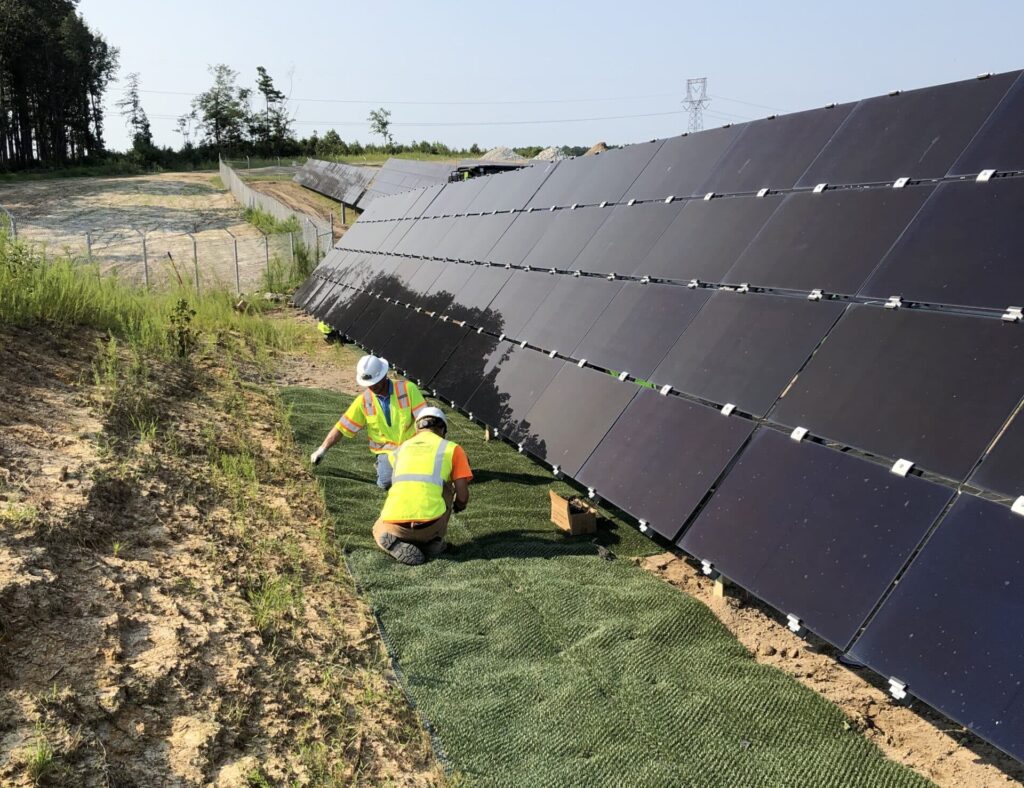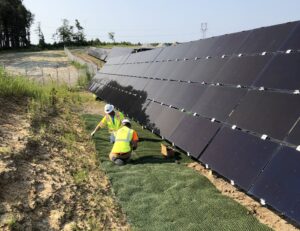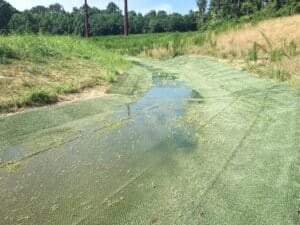Introduction
As the solar industry continues to expand, so does the need for effective erosion control on solar farm sites. One often-overlooked concern is dripline erosion—the process by which concentrated water flow from solar panel edges leads to soil degradation and sediment runoff. Civil engineers working on solar developments are likely familiar with the risks posed by this type of erosion, but the strategies for addressing it vary significantly across states and local jurisdictions.
We’ve outlined the states that are leading the way in publicly available solar farm erosion guidance. Whether through formal guidelines, recommended practices, or local advisories, understanding how different regions address this issue is critical for engineers tasked with designing sustainable, stormwater-compliant solar farm sites. We’ll explore how different states—ranging from Connecticut to Wisconsin—approach the challenge of managing dripline erosion, and what tools and resources are available to help guide the design and implementation of erosion control measures.
This post takes a closer look at how various states are tackling dripline erosion and the measures engineers must implement to ensure compliance. From formal guidelines to recommended practices, we’ll break down the state-specific approaches currently in place across key regions. Whether you’re managing a new solar development or advising clients on best practices, understanding these regional differences is essential for staying ahead of regulations and mitigating risks.

Connecticut
- Dripline Erosion Guidance:
- Dripline erosion is explicitly recognized in the Connecticut Stormwater Quality Manual.
- The manual states: “If the lowest vertical clearance of the solar panels above the ground is greater than 10 feet, non-vegetative control measures are required to prevent/control erosion and scour along the drip line or otherwise provide energy dissipation from water running off the panels.”
- Related Documents:
- Additional Notes:
- Both general permits reference dripline erosion and solutions for energy dissipation.

Georgia
- Dripline Erosion Guidance:
- Georgia recognizes the potential for dripline erosion and advises addressing it on steeper slopes to protect topsoil and manage flow at the drip lines of solar panels.
- Related Documents:
- Recommended Practices for the Responsible Siting and Design of Solar Development in Georgia. The document cites South Carolina’s guidelines on solar farm habitat development as a potential model.
- Additional Notes:
- The guidelines suggest evaluating areas where flow may concentrate and where erosion control may be necessary.

Illinois
- Dripline Erosion Guidance:
- No statewide recognition of dripline erosion, but erosion control for solar farms is acknowledged under the Pollinator-Friendly Solar Site Act and certain local authorities have been shown to recognize dripline erosion.
- Related Documents:
- Pollinator-Friendly Solar Site Act: Erosion control is encouraged, particularly to reduce stormwater runoff.
- Will County Local Guidelines: Will County recognizes the need for energy dissipation at the dripline of panels.
- Additional Notes:
- The state seems to be applying a concentrated emphasis to a resource called the Solar Site Pollinator Scorecard. This will be a good resource to keep any eye on for any future updates regarding Illinois state guidance for dripline erosion control on solar farms.

Maryland
- Dripline Erosion Guidance:
- Maryland recognizes dripline erosion and recommends solutions such as installing splash pads (e.g., gravel or soil stabilization matting) below the drip line.
- Related Documents:
- Technical Memorandum #8 (2018): States that splash pads are preferable and advocates for the use of matting.
- Stormwater Design Guidance – Solar Panel Installations (2013): Developers are advised to follow these guidelines to prevent dripline erosion.
- Additional Notes:
- Technical Memorandum #8 also suggests developers use matting (both permanent and temporary) to manage erosion. The document advises that “because matting is thin and the grass grows through it, it may be the better surface. Matting comes in permanent and temporary variations. The permanent is preferable”.

Minnesota
- Dripline Erosion Guidance:
- Minnesota’s Stormwater Manual explicitly recognizes dripline erosion as a key concern for solar sites.
- Related Documents:
- Minnesota Stormwater Manual: Includes a fact sheet on solar farm impacts, including dripline erosion.
- Additional Notes:
- Minnesota also offers a runoff calculator, developed with the National Renewable Energy Laboratory, to estimate stormwater retention on solar farm sites.
- To explore this runoff calculator more, click here for a page form the Minnesota Stormwater Manual or click here for an article from the International Erosion Control Association.

North Carolina
- Dripline Erosion Guidance:
- North Carolina addresses dripline erosion as part of its stormwater design manual, specifically focusing on slopes greater than 8%.
- The guidance includes the need to manage sheet flow and dissipate energy at the drip edge.
- Related Documents:
- Stormwater Design Manual: Section E-6 provides guidance for solar arrays.
- The manual’s guidelines are legally codified in the state’s stormwater rules, effective since January 1, 2017.
- Additional Notes:
- Emphasis is placed on ensuring the installation of solar arrays allows for vegetation growth beneath and between the panels.

Ohio
- Dripline Erosion Guidance:
- Ohio’s guidance is closely aligned with Maryland’s approach for managing dripline erosion.
- Related Documents:
- Post-Construction Stormwater Management for Solar Panel Fields – Fact Sheet: Cites Maryland’s Stormwater Design Guidance – Solar Panel Installations on placing stone splash pads to dissipate energy at the dripline.
- Ohio also requires solar developers to meet the criteria for an Ohio EPA NPDES construction stormwater general permit.
- Additional Notes:
- Ohio’s guidance is designed to help developers achieve NPDES permit compliance.

Pennsylvania
- Dripline Erosion Guidance:
- Pennsylvania recognizes the potential for accelerated erosion along the dripline of solar arrays and advises additional erosion control measures.
- Related Documents:
- 2021 FAQ from the Department of Environmental Protection Bureau of Clean Water: Discusses the need for turf reinforcement or energy dissipation at the dripline.
- Additional Notes:
- Special consideration is given to projects with slopes exceeding 10%, recommending options for maintaining sheet flow and dissipating energy at the drip edge.

South Carolina
- Dripline Erosion Guidance:
- South Carolina’s guidance acknowledges the importance of erosion control at the dripline, particularly on steeper slopes.
- Related Documents:
- South Carolina Solar Habitat Act (2018): Encourages voluntary practices to reduce stormwater runoff and erosion at solar sites.
- Technical Guidance for the Development of Wildlife & Pollinator Habitat at Solar Farms: Recommends considering erosion control in all phases of solar site development.
- Additional Notes:
- Steeper slopes should be evaluated for concentrated flow and potential erosion at the dripline.

Virginia
- Dripline Erosion Guidance:
- Virginia’s Stormwater Management Handbook acknowledges dripline erosion and recommends establishing permanent perennial vegetation to reduce erosion.
- Related Documents:
- Virginia Stormwater Management Handbook: Calls for strategies to manage sheet flow and dissipate energy at the drip edge for slopes greater than 5%.
- Additional Notes:
- Permanent vegetation is emphasized as a critical tool for mitigating dripline erosion.

Wisconsin
- Dripline Erosion Guidance:
- Wisconsin recognizes the potential for dripline erosion, particularly if panels are oriented improperly to the site’s topography.
- Related Documents:
- Post-Construction Storm Water Management for Ground-Mounted Solar: States that additional erosion control is necessary if the dripline is more than 45 degrees off parallel with topographical contours.
- Additional Notes:
- Specific recommendations include establishing prairie vegetation, using turf reinforcement mats, and preventing concentrated flow at the dripline.








